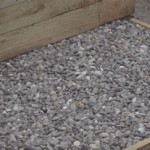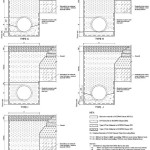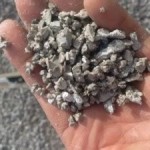Gravel Bedding: Essential Aspects for Construction Sites
Gravel bedding plays a crucial role in construction projects, providing a stable and well-drained foundation for various structures. Understanding the purpose, types, and proper installation techniques of gravel bedding is essential for ensuring the longevity and integrity of construction projects. This article explores the essential aspects of gravel bedding, offering valuable insights for site engineers, contractors, and construction professionals.
Purpose and Benefits
Gravel bedding serves multiple purposes on construction sites:
- Drainage: Gravel allows excess water to drain away from the structure, preventing waterlogging and deterioration.
- Stability: It provides a stable base for structures, preventing uneven settlement and subsidence.
- Leveling: Gravel can be used to level the ground, creating a uniform surface for construction.
- Frost Protection: Gravel acts as an insulator, protecting structures from frost damage during freezing temperatures.
Types of Gravel Used
Depending on the specific requirements of the project, different types of gravel may be used for bedding:
- Crushed Stone: Angular, crushed stone provides excellent drainage and load-bearing capacity.
- Pea Gravel: Rounded, pea-sized gravel is suitable for areas with lighter loads and requires less compaction.
- Crushed Recycled Concrete (CRC): A sustainable option made from recycled concrete, offering good drainage and stability.
- Limestone: Crushed limestone provides a stable and well-draining base for roads and parking lots.
Proper Installation of Gravel Bedding
Proper installation of gravel bedding is crucial for its effectiveness. Here are the key steps:
- Excavate and Compact: Excavate the area to the specified depth and compact the subgrade to ensure a firm base.
- Lay Geotextile Fabric: A layer of geotextile fabric prevents soil contamination and weed growth.
- Spread Gravel: Spread the selected gravel evenly over the geotextile fabric, maintaining the desired thickness.
- Compact the Gravel: Compact the gravel in layers using a plate compactor or roller to achieve the required density.
- Level and Smooth: Level and smooth the gravel surface using a screed or grader.
Conclusion
Gravel bedding is an essential component of construction sites, providing drainage, stability, leveling, and frost protection. Understanding the purpose, types, and proper installation techniques of gravel bedding is crucial for ensuring the structural integrity and longevity of construction projects. By adhering to these guidelines, engineers and contractors can effectively utilize gravel bedding to create a solid foundation for various structures.

Gravel Cinder And Hoggin Paths Drives Pavingexpert

Know How To Meet Bedding Regulations Master Plumbers

Bedding Layer An Overview Sciencedirect Topics

Aggregate Base Course Acme Sand Gravel

Gravel Cinder And Hoggin Paths Drives Pavingexpert

4 9 Bedding And Backfill

Splash Strips

Pipe Bedding Material Cost Calculator Mpa

Bedding Layer An Overview Sciencedirect Topics

Storage Tank Foundation Design Construction Eurotankworks
Related Posts








